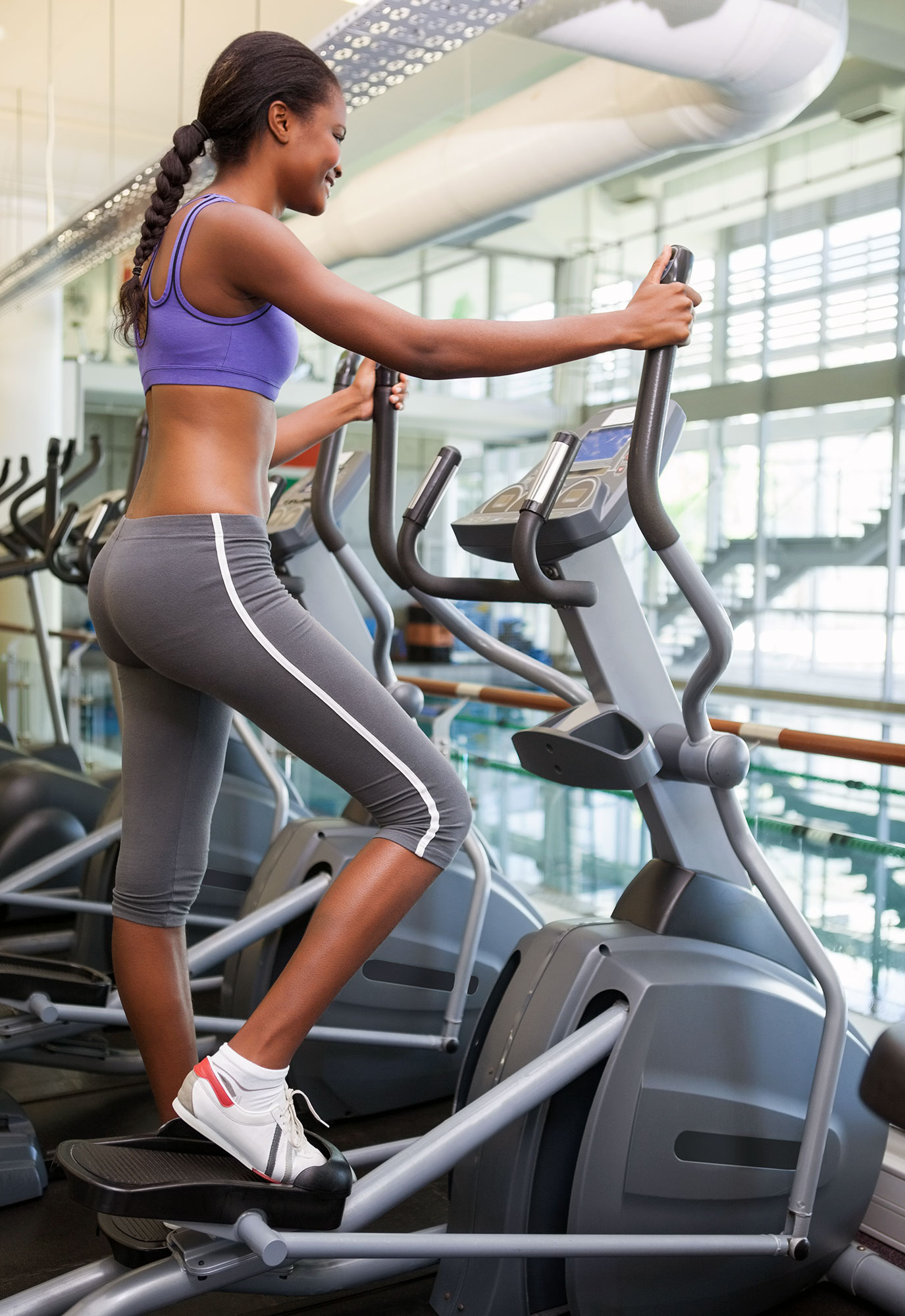Treadmills vs ellipticals: which cardio machine is king?
We weigh up the pros and cons of treadmills vs ellipticals to help you decide which is best for your cardio requirements


Whether you're wondering which machine to use in the gym or struggling to decide between treadmills vs ellipticals for your home gym, the choice can leave you scratching your head.
Which machine offers the best workout? Which burns more calories? And which is better if you are recovering from an injury?
Each machine offers different benefits. The best treadmills promise to help you torch calories thanks to the ability to increase speed and incline, whilst the best elliptical machines offer a low-impact alternative that’s similarly - if not quite so - demanding.
Below, and with the help of personal trainer Ben Walker from Anywhere Fitness, we assess the pros and cons of each type of fitness machine to help you decide which is best for you.
Treadmill: Pros
If you’re looking to burn calories and lose fat, treadmills offer a tougher cardio workout than elliptical machines.
“On a treadmill, as you are lifting both feet off the ground repetitively, you carry your body weight during each stride,” says Walker.
“This means you experience more instant and higher fluctuations in heart rate when changing speed and incline. Combined with moving your arms, it's more effective for weight loss when compared to the elliptical machine.”
Start your week with achievable workout ideas, health tips and wellbeing advice in your inbox.
“From running on a steep slope to walking on a flat surface, the options for rapidly changing the intensity makes the treadmill better for raising your heart rate more rapidly and improving aerobic and anaerobic fitness,” says Walker.

“When exercising at a steady pace [aerobic] we burn fat cells as a main source of energy. When we begin to run at higher intensity [50-100%], we start to use carbs and sugar as our fuel source. The treadmill benefits this method of training.
“By changing the settings quickly, it makes it more comfortable for staying in the total fuel-burning zone without feeling like you need to give up. This achieves better fat-loss results.” For this reason, you can burn 700-1,000 calories in a one-hour workout, depending on your weight and the intensity of the training session.
The treadmill is also great for promoting functional movements. “You move the way your body is meant to when running on a treadmill,” says Walker.
“What we do in the gym is meant to replicate what we do in everyday life so that we aren't faced with any physical difficulties. When running, our muscles contract and assist each other the correct way.” This is something the treadmill achieves perfectly.
Treadmill: cons
If you are injured, or at risk of injury, you should avoid running on a treadmill. “Running with upper-body injuries in particular can be risky for further injury,” says Walker.
There is also the boredom aspect to treadmill running - running far but going nowhere isn’t often the most engaging of exercises.
However, there are an increasing number of ways to make it more enticing, such as apps like Zwift Run, or simply watching a box set while you tick off the miles.
Elliptical machines: Pros
It’s hard to compete with the treadmill in terms of a cardiovascular workout, but an elliptical machine can burn 400-600 calories in an hour, depending on the intensity of the session.
However, the elliptical machine can be especially beneficial for those recovering from (or prone to) injuries. “Pushing and pulling the elliptical bars can be a great form of resistance training for healing any injury to the rotator cuff or shoulder girdle,” says Walker.
Plus, as your foot never leaves the foothold, ellipticals offer a low-impact workout - ideal for anyone with knee or ankle issues.
The elliptical also provides an effective method of rehabilitation by raising the machine’s resistance level or incline. “While bearing minimal weight, you can strengthen muscles in your arms, legs, hips and lower back when increasing the gradient.
“Doing this activates the glutes, quads, hamstrings and calves. If you’re injured, and you’re looking to get a cardio and resistance-based workout simultaneously, adjusting the settings on your elliptical machine can cover that.”

Elliptical machines: Cons
Walker warns that overuse of the elliptical machine can result in a muscle imbalance.
“For example, if you don't flex your knees and feet, your hips and hamstrings can become very tight over time,” he says.
“It's important to limit these movements and run more often if possible.”
Treadmills vs Elliptical Machines: The Final Say
Both machines offer the options for intense, all-body cardio workouts. “Engaging multiple muscle groups is great for losing weight,” says Walker. “When resting, those muscles continue to burn calories for hours after the workout. This is another reason for raising the intensity of your session on the treadmill or elliptical machine.”
If you undertook an intense session for an hour on each machine, the treadmill would edge it in terms of calorie burn and fat loss.
However, in terms of providing a low-impact workout, the elliptical machine is the clear winner. If protecting your muscles and joints is a priority, or you simply want to avoid or are recovering from injury, go for an elliptical machine.
Howard is a freelance health and fitness journalist and copywriter. He has written for publications including ShortList, Runner’s World, Trail Running, Women’s Running, Red Bulletin, Wareable and Cycling Weekly. He enjoys nothing more than lacing up his trail shoes and heading out to explore new trails. He’s run ultramarathons everywhere from the French Alps and Canadian mountains to the Welsh coast and Peak District. When not running, he’s usually found hitting his local MTB singletrack trails or on a quest to find the country’s best cinnamon bun.
